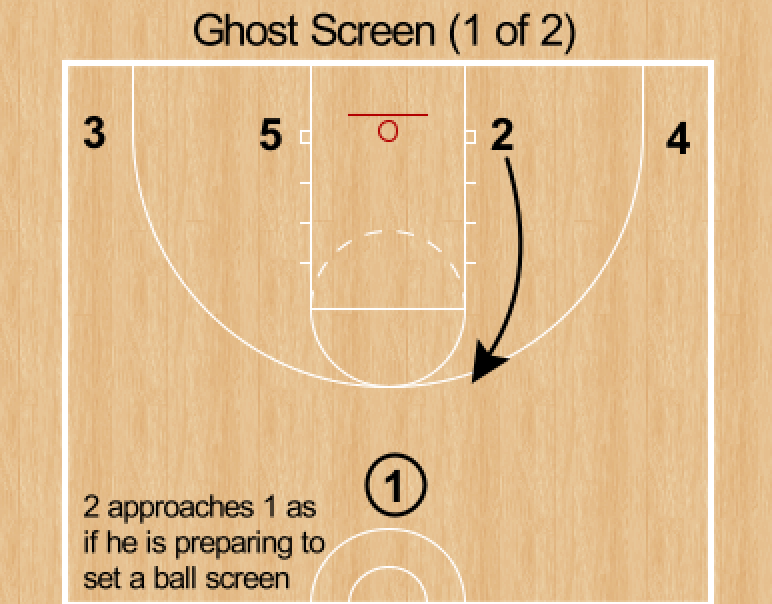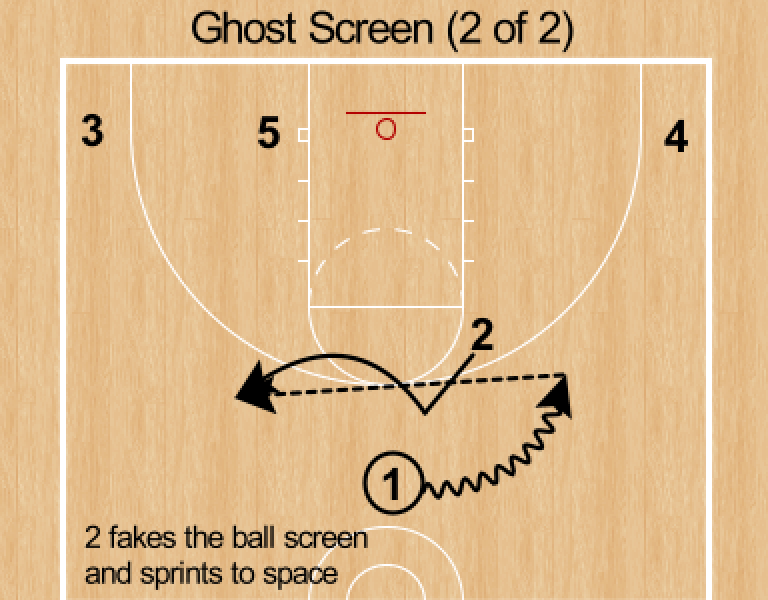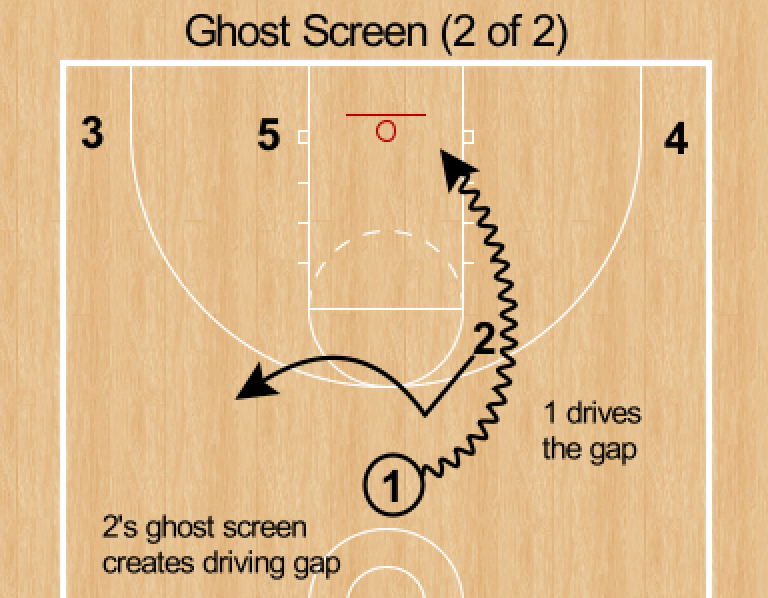Using Ghost Screens to Score
What is a ghost screen?
Ghost screens are becoming more and more popular in today’s game and offenses, especially as a way to get shooters open in space for a catch & shoot opportunity. In fact, in a recent Slappin’ Glass podcast, which I recommend you check out if you haven’t already, Fran Fraschilla joked that the ghost screen is becoming the next “America’s Play.”
A ghost screen is essentially a fake screen or a running slip, and occurs when a player (usually a shooter) approaches the ball handler to set a ball screen, but instead of screening he sprints to open space. The goal of a ghost screen is to create confusion among the defenders and distort the defense.
Ghost Screen basics:
Ghost screens are effective because they exploit the defense’s tendencies when it comes to defending ball screens. As the player setting the ghost screen approaches the ball handler, defenders are taught to anticipate the ball screen and subsequently position themselves to defend against it. However, ghost screening or faking the screen causes confusion among the defenders, usually resulting in two defenders guarding the ball, allowing for an open catch & shoot opportunity.
To execute a ghost screen, the ghost screener (shooter) jogs towards the ball handler like he is preparing to set a ball screen. As the ghost screener approaches the ball handler, he fakes the screen and sprints to open space and sets his feet for a potential catch & shoot.
Pace is the most important factor to an effective ghost screen—jogging towards the ball handler allows the defense to communicate the ball screen and prepare to defend against it. Jogging also causes the defense to relax as they are setting up their ball screen coverage. Only then does the ghost screener sprint away to space, catching the defenders completely off guard. As Fran Fraschilla put it in the Slappin’ Glass podcast, the ghost screener seemingly “disappears” into thin air.
Attacking the Gap:
Another reason ghost screens are so effective in creating an offensive advantage is the fact that in addition to potentially creating an open look for a shooter, ghost screens also create a double or triple gap for the ball handler to potentially attack.
With the on-ball defender anticipating a typical ball screen, they will often times shift their foot angle to force the ball handler into the ball screen and into the screener’s defender, who is typically tasked with helping in the ball screen coverage. But with a ghost screen, that ball screen is never set, so instead of the ball handler being forced into the screener’s defender, a large gap is created for the ball handler to potentially attack downhill.
The ghost screener is usually a shooter, so this puts his defender in a tough spot—If they stay with the ghost screener as he sprints to space, this allows the ball handler to attack. If they help on the ball handler’s attack, this allows the ghost screener (shooter) to sprint to space and have an open catch & shoot opportunity.




